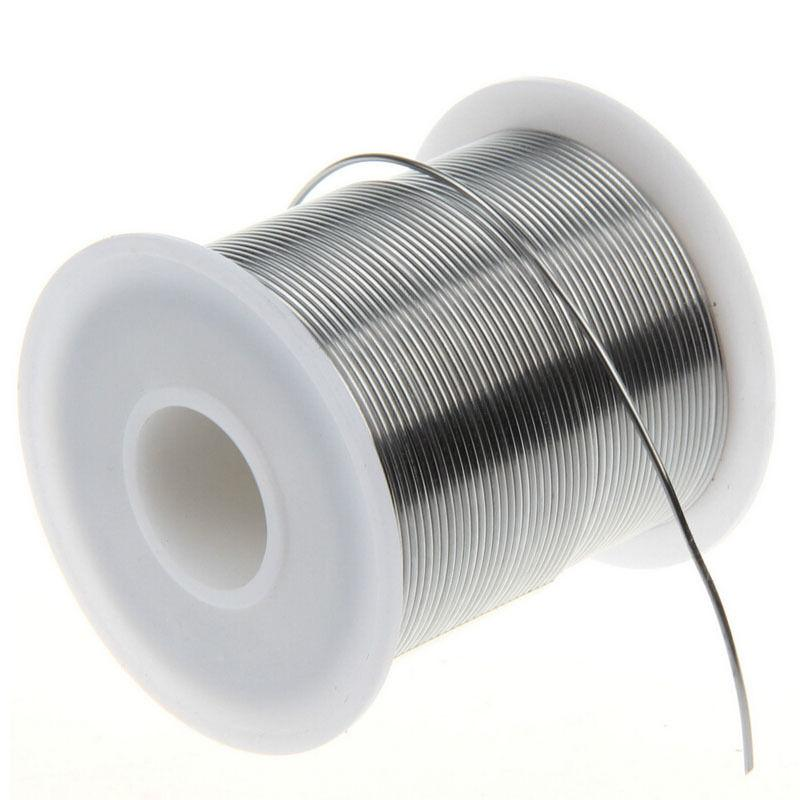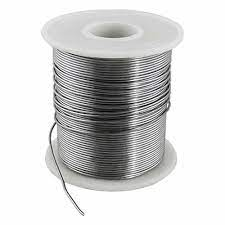ORGANIZATION OF SOLDERING PROCESSES OF SMALL PRODUCTS WITH ALLOYS,
Soldering of small items with solder wire tin lead alloys is carried out at a temperature of 180 - 350 degrees. It is manually using an electric soldering iron, on machines of various designs, by dipping and wave soldering. For the soldering operation, lead alloys of various grades are common. The most common brands are POS-40 and POS-60. As a flux, rosin is most often common.
Process of soldering
Soldering work is performed in separate areas of production or alternates with assembly and assembly processes. The soldering process can be accompanied by lead contamination of the air both directly during soldering and during periods when the soldering solder wire tin lead and baths are in working order. Lead contamination of work surfaces and the skin of workers' hands can also occur.
How to prevent from chronic occupational lead poisoning?
In order to prevent chronic occupational lead poisoning among workers engaged in the soldering of small products in the relevant areas of enterprises, it is necessary to comply with the soldering requirements provided for by these Rules.
1. Scope and order of application of the Rules
Ø Newly organized area
For newly organized areas, where we plan it to carry out soldering work, the Rules come into force in full immediately after their approval. In relation to existing workshops and sites, the requirements of these rules are good within the time frame agreed with the local soldering and epidemiological service bodies.
Ø Soldering rules for the arrangements
With the approval of these Rules, "Soldering rules for the arrangement solder wire tin lead and maintenance of areas where small items solder with lead-containing alloys", N 381-61, are canceled.
Ø Design for soldering machine
The design of soldering machines are good to carry out in relation to these industries, taking into account the specifics of each of them, which will eliminate the need for constant maintenance of these machines by the operating.
Ø Area for soldering
Areas where we carry soldering should be into separate rooms. In the case of soldering work of solder wire tin lead on a production line, there should be separate rooms.

Ø Decoration for premises
Decoration of premises, as well as air ducts, communications, heating devices, etc. should allow them to be cleaned of dust and periodically washed. Wall joints with each other, with the ceiling and floor should be rounded; walls, window frames, heating devices, air ducts should be smooth and covered with light-colored oil paint; floors should also be smooth, without gaps and slopes towards sewers.
Ø Production areas
Production areas should have easily washable portable containers for storing and carrying products, soldering irons, flux alloy and rags common when cleaning the workplace. In cases where paper napkins are common, these containers can also serve to collect them.
Ø Why cabinets are necessary?
In the premises where soldering of solder wire tin lead take place out, it is necessary to install cabinets with washing tanks for washing some types of work equipment. It can be containers for lead alloys and fluxes, containers for carrying products coated with lead alloys, brushes, etc. Their finishing must meet the requirements of clause.
Ventilation requirements
- The design and layout of the ventilation network ensure the regular cleaning of the air ducts
- It is necessary to comply with the cleaning time of ventilation units
- Working soldering irons must always be in the area of the exhaust ventilation
- Soldering machines must be structurally provided with aspiration devices
- The rooms in which the soldering areas are located must be provided with fresh air supplied
- The use of air recirculation in the soldering room is not allowed.
Requirements for the maintenance and cleaning of the premises
- They are good to work due to solder wire tin lead
- Work surfaces of tables, boxes for storing tools and containers common in workplaces should be cleaned
- General wet cleaning is good to carry daily in dressing rooms for work clothes
- Cabinets for storing work clothes and personal belongings of workers should is good to wash
- We must wash all the things with hot water and soap on a weekly basis.
How to carry soldering with solder wire tin lead professionally?
It is necessary to learn how to weld correctly. But under professional guidance and with a little practice this isn't a problem.
Preparation
The parts of soldering must be clean and must not have an oxide layer. If necessary, deposits can be removed with alcohol, a fiberglass rubber or steel wool.
Use a rubber mat to protect the table top from welding spatter. In addition to special fireproof mats, inexpensive rubber mats from the automotive industry can also be common.
Keep all necessary solder wire tin lead tools and aids, such as burs or third hand, close at hand. Turn on the soldering device and check the soldering tip. If necessary, clean the tip with a metal wool soldering tip cleaner. Wet sponges that were often common in the past are now less recommendable. Thermal shock during cleaning can lead to fine cracks in the soldering tip.
Soldering cables and wires with solder wire tin lead
If you want to solder the cables together or connect the wires, proceed as follows:
Remove the cable sheath with the help of a wire stripper. Twist the thin wires of the cable with your thumb and forefinger to form a stable conductor.
Heat the end of the wire with a soldering iron and add the solder. The welding liquid is then sucked into the twisted end of the cable by the capillary action (Figure A).
Before soldering two ends of the tin cable, a piece of heat shrink tubing must come to one side to subsequently insulate the solder joint. With the help of the third hand, the ends of the cables to connect and place next to each other and held tightly.
Conclusion solder wire tin lead
As we can see, modern solder wire tin lead makes use of very advanced soldering techniques. This can give excellent results in the most diverse conditions.
Electrode soldering remains one of the techniques of choice when it is necessary to work outdoors. It gives in to more efficient methodologies when it comes to operating on large production volumes. In the latter case, the best results come by continuous wire welding with protective gas. Therefore with the professional solder bar you can develop better flawless solutions.





